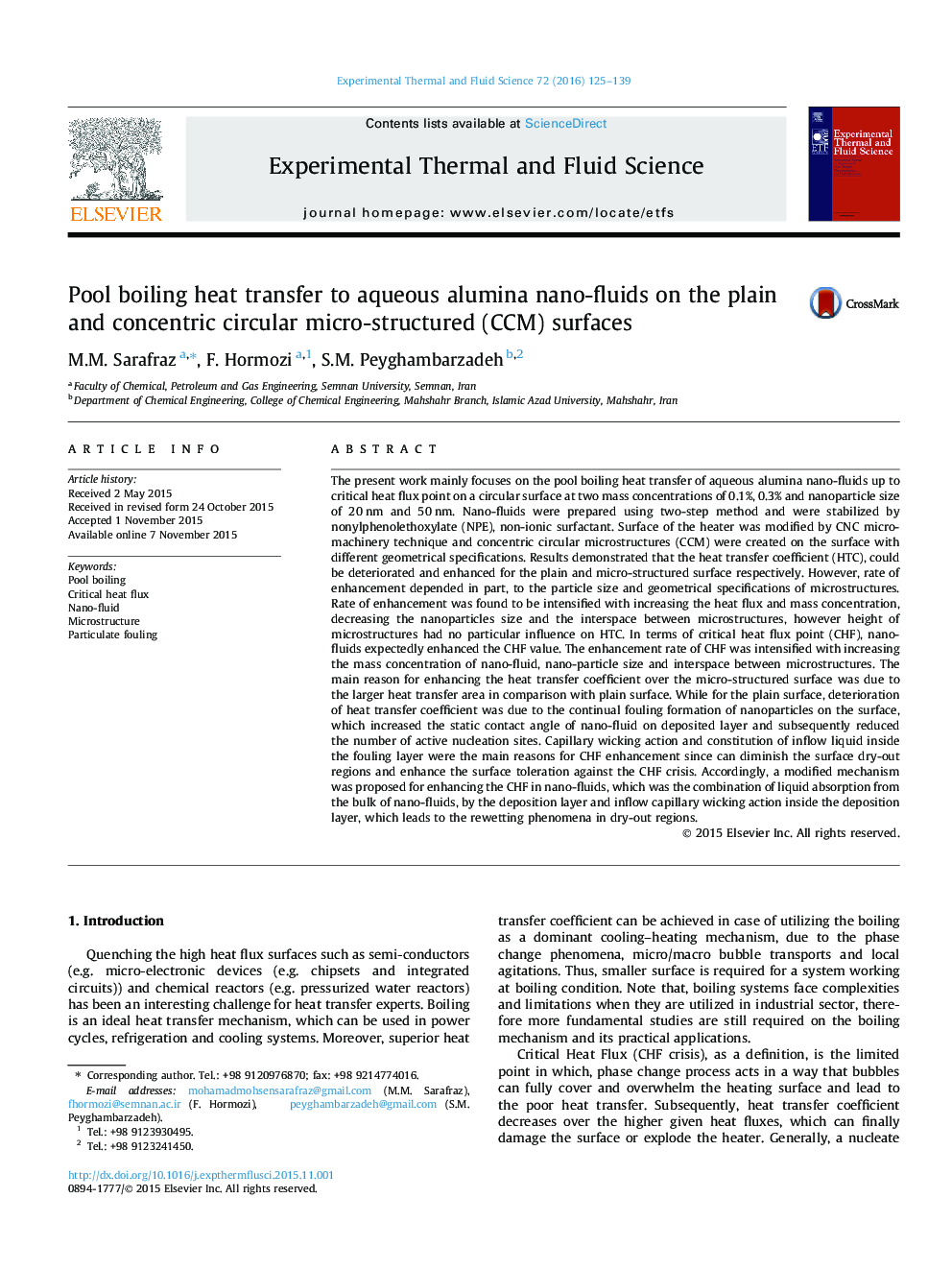| کد مقاله | کد نشریه | سال انتشار | مقاله انگلیسی | نسخه تمام متن |
|---|---|---|---|---|
| 651166 | 1457404 | 2016 | 15 صفحه PDF | دانلود رایگان |
عنوان انگلیسی مقاله ISI
Pool boiling heat transfer to aqueous alumina nano-fluids on the plain and concentric circular micro-structured (CCM) surfaces
دانلود مقاله + سفارش ترجمه
دانلود مقاله ISI انگلیسی
رایگان برای ایرانیان
کلمات کلیدی
موضوعات مرتبط
مهندسی و علوم پایه
مهندسی شیمی
جریان سیال و فرایندهای انتقال
پیش نمایش صفحه اول مقاله

چکیده انگلیسی
The present work mainly focuses on the pool boiling heat transfer of aqueous alumina nano-fluids up to critical heat flux point on a circular surface at two mass concentrations of 0.1%, 0.3% and nanoparticle size of 20Â nm and 50Â nm. Nano-fluids were prepared using two-step method and were stabilized by nonylphenolethoxylate (NPE), non-ionic surfactant. Surface of the heater was modified by CNC micro-machinery technique and concentric circular microstructures (CCM) were created on the surface with different geometrical specifications. Results demonstrated that the heat transfer coefficient (HTC), could be deteriorated and enhanced for the plain and micro-structured surface respectively. However, rate of enhancement depended in part, to the particle size and geometrical specifications of microstructures. Rate of enhancement was found to be intensified with increasing the heat flux and mass concentration, decreasing the nanoparticles size and the interspace between microstructures, however height of microstructures had no particular influence on HTC. In terms of critical heat flux point (CHF), nano-fluids expectedly enhanced the CHF value. The enhancement rate of CHF was intensified with increasing the mass concentration of nano-fluid, nano-particle size and interspace between microstructures. The main reason for enhancing the heat transfer coefficient over the micro-structured surface was due to the larger heat transfer area in comparison with plain surface. While for the plain surface, deterioration of heat transfer coefficient was due to the continual fouling formation of nanoparticles on the surface, which increased the static contact angle of nano-fluid on deposited layer and subsequently reduced the number of active nucleation sites. Capillary wicking action and constitution of inflow liquid inside the fouling layer were the main reasons for CHF enhancement since can diminish the surface dry-out regions and enhance the surface toleration against the CHF crisis. Accordingly, a modified mechanism was proposed for enhancing the CHF in nano-fluids, which was the combination of liquid absorption from the bulk of nano-fluids, by the deposition layer and inflow capillary wicking action inside the deposition layer, which leads to the rewetting phenomena in dry-out regions.
ناشر
Database: Elsevier - ScienceDirect (ساینس دایرکت)
Journal: Experimental Thermal and Fluid Science - Volume 72, April 2016, Pages 125-139
Journal: Experimental Thermal and Fluid Science - Volume 72, April 2016, Pages 125-139
نویسندگان
M.M. Sarafraz, F. Hormozi, S.M. Peyghambarzadeh,